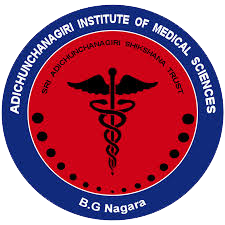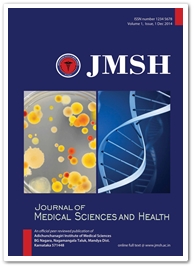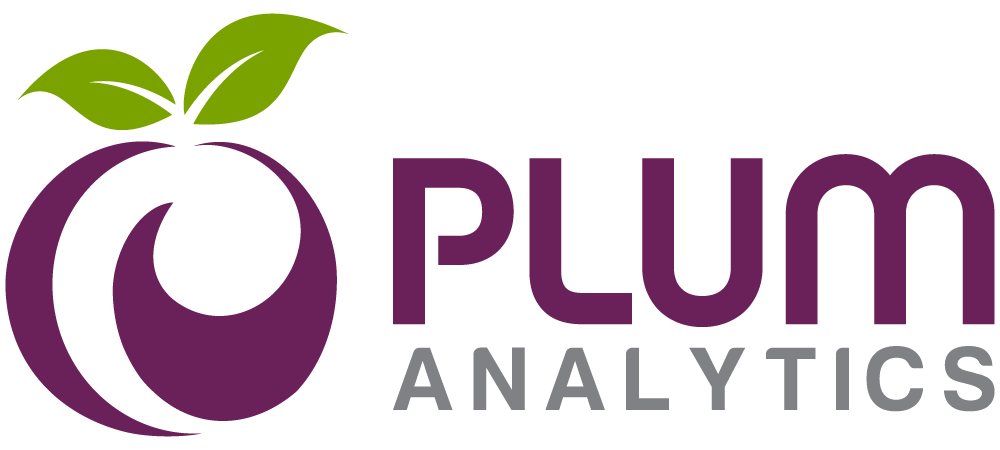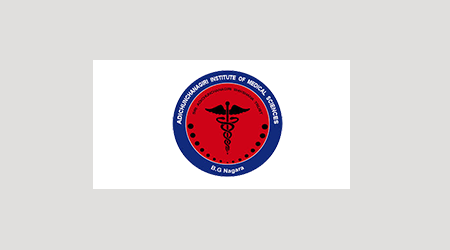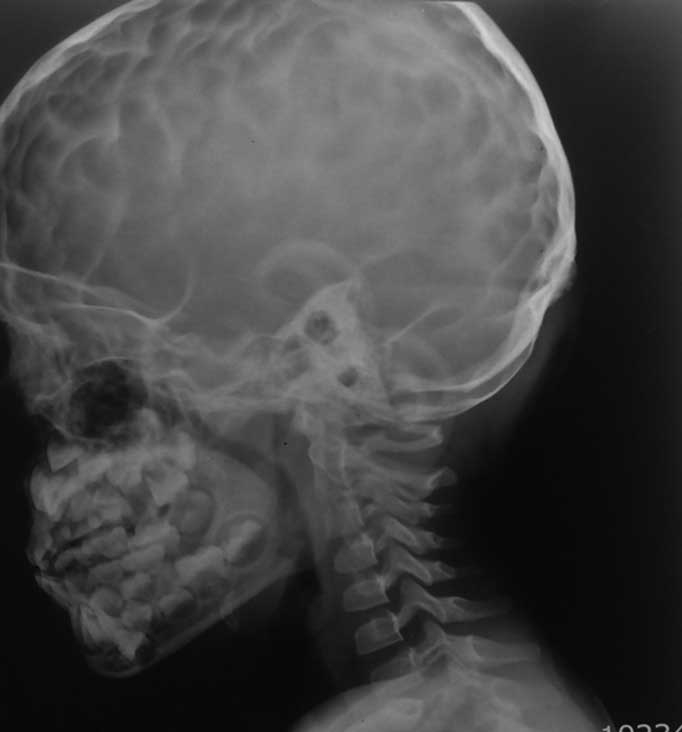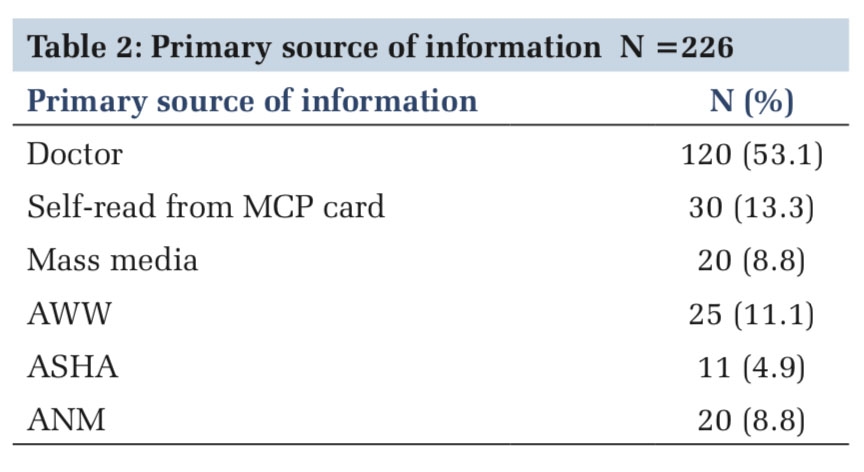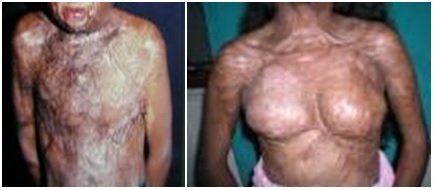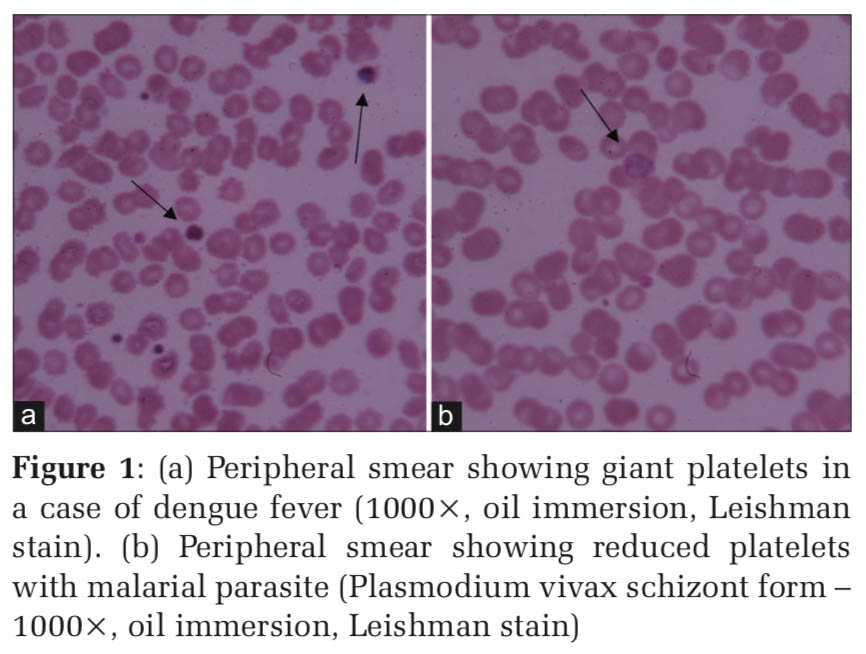Introduction
Central venous access is defined as placement of a catheter into great vessels like internal jugular vein (IJV), brachiocephalic vein, subclavian vein and femoral vein. Since last 4 decades, there has been an enormous increase in the use of central venous catheterization for various indications like hemodynamic monitoring, haemodialysis, total parenteral nutrition (TPN), delivery of blood products and drugs irritating the peripheral veins, management of perioperative and long-term infusion of fluids and volume resuscitation. 1
Broadly, there are two approaches to insert central venous catheters. In the landmark technique, it is achieved by using surface anatomical landmarks and by knowing the expected anatomical relationship of the vein to its palpable companion artery.2 There are few studies in literature about the different landmark technique for CVL insertion. M Oda et al, popularized paracarotid approach for internal jugular cannulation using the carotid artery as a landmark.3
English et al described two methods of internal jugular vein percutaneous cannulation. One method was based on palpation of internal carotid artery, while the other was related to the medial border of the clavicular attachment of sternocleidomastoid muscle.4 Bart G Denys proposed the use of ultrasound and doppler to assist cannulation of the internal jugular vein in 1984. Bart G Denys et al also reported that anatomical variation in the position of the internal jugular vein in adults may complicate venous access by percutaneous route when a landmark guided technique was used.5 Ultrasound has been used to assess the normal IJV anatomy and to refine the technique of percutaneous cannulation of IJV. Apart from that, sonographic guidance supplements the above technique with safety, rapidity, first pass success rate and less complications.
In a study conducted by Ahmed SS et al., it was concluded that any technique can be used for IJV cannulation, but the most acceptable is the real-time US technique. However, no difference in the overall procedure time among anatomical landmark, ultrasound guided prelocation or real time ultrasound guided techniques was noted, and no major complications were found. 6 In a study conducted by Swati Choraria et al., it was concluded that Ultrasonography provides the benefit of real time visualization of the anatomical structures at the time of procedure and significantly reduces the total procedural time with a well versed and adequately trained operator. 7
In the studies of Indian context, comparison between the different IJV cannulation techniques in the Emergency Department (ED) settings are lacking. Hence, the present study was done in our tertiary care centre to evaluate ultrasound guided technique versus traditional landmark technique with regard to safety, rapidity and feasibility.
Material and Methods
Approval from the Institutional ethics Review Board (IRB) was taken before the start of the study. This was a prospective observational study done for a period of one year on patients presenting to Departments of Emergency Medicine and Critical Care Medicine who require central venous line insertion. Nonprobability purposive sampling was used. Patients aged more than 18 years irrespective of gender who need central venous pressure monitoring, long term (more than 7 days) intravenous access or medications, drugs irritating peripheral veins, total parenteral nutrition, temporary hemodialysis and who have inaccessibility to peripheral veins were included in the study. Patients with severe bleeding tendency and coagulopathy states, obstruction of the superior or inferior venacava, innominate vein and internal jugular vein, recently failed attempts at cannulation by an experienced operator, neck trauma, ongoing cardiopulmonary resuscitation, presence of infections, burns, cancerous lymph nodes, tortuous arteries or proximity of an aneurysm to the vein in the neck were excluded from the study. Sample size was calculated using the below formula.
n = Z2 x p (q) / D2
where,
n = Sample Size
Z = Standard level of chosen level of confidence = 1.96(Confidence level = 95%)
p = Expected proportion in population = 0.5 (proportion was taken as 0.5 to get the maximum sample size)
q = (1-p) = 0.5
D = Acceptable sample error = 10%
On substituting the above values in the formula, we got the minimum sample size of 96.04. In our study, we took sample size of 100 which is above the minimum sample size. Written informed consent from all the patients was obtained. A total 100 patients were randomly assigned for cannulation with anatomical landmark (50 patients) and with ultrasound-guided (50 patients) technique. In our study, the central approach was followed commonly for internal jugular vein catheterisation. Only one operator performed all the CVL insertions in the study who had performed CVL insertions using landmark and ultrasound guided techniques at least nearly 10 each for a period of 2 months before the study. The operator also had training in the use of ultrasonography for performing procedures.
The key differences in performing both the procedures were, in anatomical landmark technique, a 22G finder needle attached with a 5ml syringe was inserted at the apex of the triangle formed by the two heads of the sternocleidomastoid (SCM) muscle, directed towards the ipsilateral nipple at an angle 35-45° with the skin and needle entering into internal jugular vein. But in ultrasound guided technique, linear ultrasound probe (7-13MHz) contact surface was covered with 5% povidine iodine solution and transparent occlusive material. 5% povidine iodine solution was used as the ultrasound conductive medium between the transducer and the patient’s skin. Then cannulation was performed under real time ultrasonography guidance from needle locating the vessel at one side of the neck at the level of cricoid cartilage and needle entering into skin and internal jugular vein.
Post procedure plain chest radiograph was done in all patients immediately to ensure proper position of catheter tip and to exclude any complications. Anthropometric parameters, preparation time (time taken for painting, draping the neck in carotid triangle in landmark technique till the time taken to prepare the sterile ultrasound probe and to wrap the transducer up to location of IJV in ultrasound technique), access time (time taken from initial skin puncture to skin suturing), number of attempts and complications such as cannulation problem, carotid artery puncture, guidewire problem and skin hematoma were analysed up to a period of 4 hours from the needle access time between both the study groups.
Statistical methods:
Statistical analysis was carried out by using Statistical Package for Social Sciences version IBM SPSS v25. Continuous variables were expressed as Mean ± Standard Deviation (SD) and categorical variables as frequencies and percentages (%). The differences between groups were analysed by unpaired t-test or Chi-square test and shown with cross tabulation. P (probability) value < 0.05 was considered as significant.
Results
This was a study of 100 patients of which there were 50 patients in ultrasound guided group and 50 patients in landmark guided group. Mean age among the ultrasound group was 52.12±17.274years (ranging from 20 to 84 years) and in the landmark group was 54.10±14.651years (ranging from 27 to 85 years). There was male (64%) predominance compared to females (36%) among the study population. Ultrasound guided technique was conducted on 33(66%) male and 17(34%) female patients. Landmark technique was employed on 31(62%) male and 19(38%) female patients. There were different types of emergencies, most common being cardiac (21%) and gastrointestinal (21%) followed by neurological emergencies (14%). Table 1 depicts the distribution of study population based on type of emergency. Anthropometric parameters such as height, weight and body mass index were also documented and there were no statistically significant differences between the two study groups. The same has been illustrated in Table 2.
|
Type |
Ultrasound |
Landmark |
Total |
|
Trauma |
6(12%) |
0(0%) |
6(6%) |
|
Endocrine |
2(4%) |
1(2%) |
3(3%) |
|
Cardiac |
11(22%) |
10(20%) |
21(21%) |
|
Respiratory |
2(4%) |
1(2%) |
3(3%) |
|
Gastrointestinal |
11(22%) |
10(20%) |
21(21%) |
|
Neurological |
6(12%) |
8(16%) |
14(14%) |
|
Renal |
3(6%) |
9(18%) |
12(12%) |
|
Obstetric |
2(4%) |
2(4%) |
4(4%) |
|
Toxin/Drug |
0(0%) |
6(12%) |
6(6%) |
|
Infections |
7(14%) |
3(6%) |
10(10%) |
|
Total |
50(100%) |
50(100%) |
100(100%) |
|
Parameters |
Ultrasound |
Landmark |
P value* |
|
Height (m) |
1.6544±0.117 |
1.63±0.109 |
0.35 |
|
Weight (kg) |
60.84±7.14 |
62.22 ±9.56 |
0.41 |
|
BMI |
22.43±3.40 |
23.45±3.70 |
0.15 |
*Independent sample t test
Basic parameters like bleeding time, clotting time and platelet count were done in all patients to predict the bleeding complication during or after the CVL insertion. Mean neck circumference lower in ultrasound group (30.4±4.62 cms) and higher in landmark group (34.98±4.17cms). Mean distance between suprasternal notch and mastoid process was higher in ultrasound group (18.14±2.49cms) than landmark group (17.26±2.55cms). All of them were not statistically significant (p>0.05) between the two study groups except neck circumference (p<0.001) and it has been illustrated in Table 3.
|
Parameters |
Ultrasound |
Landmark |
P value* |
|
Bleeding time (s) |
143.9±28.96 |
147.1±32.64 |
0.60 |
|
Clotting time (s) |
335.0±56.87 |
330.7±49.104 |
0.68 |
|
Platelet count (lakh/cumm) |
3.00±0.71 |
2.78±0.73 |
0.13 |
|
Neck circumference (cms) |
30.40±4.62 |
34.98±4.17 |
<0.001 |
|
Distance (cms) |
18.14±2.49 |
17.26±2.55 |
0.08 |
|
Preparation time (sec) |
139.72±34.14 |
125.30±30.49 |
0.028 |
|
Access time (sec) |
266.60±64.12 |
291.58±89.30 |
0.11 |
*Independent sample t test
Sternocleidomastoid (SCM) muscle was palpable in 96% of patients in ultrasound group and 88% of patients in landmark group. In the remaining patients, it was only slightly palpable. The sternocleidomastoid muscle palpability was not statistically significant between the two groups (Table 4). Carotid artery was palpable in 82% of patients in Ultrasound group and 88% of patients in landmark group. In the remaining patients, it was only feeble. The carotid artery palpability was not statistically significant between the two groups (Table 5). Mean preparation time was higher in ultrasound group (139.72±34.14sec) than landmark group (125.30±30.49sec). Mean access time was lower in ultrasound group (266.60±64.12sec) than landmark group (291.58±89.30sec). Preparation time were statistically significant between the two study groups (Table 3).
|
SCM |
Ultrasound |
Landmark |
Total |
|
Palpable |
48 (96.0%) |
44 (88.0%) |
92 (92.0%) |
|
Slightly Palpable |
2 (4.0%) |
6 (12.0%) |
8 (8.0%) |
|
Total |
50 (100.0%) |
50 (100.0%) |
100 (100.0%) |
Chi square test (p = 0.14)
|
Carotid artery |
Ultrasound |
Landmark |
Total |
|
Feeble |
9 (18.0%) |
6 (12.0%) |
15 (15.0%) |
|
Palpable |
41 (82.0%) |
44 (88.0%) |
85 (85.0%) |
|
Total |
50 (100.0%) |
50 (100.0%) |
100 (100.0%) |
Chi square test (p = 0.40)
Majority (64%) of the patients in both the groups were cannulated through right IJV while 36% of patients in both the groups were through left IJV. Site of CVL insertion was statistically significant between the two groups (Table 6). Higher number of patients (84%) were successful in first attempt of CVL insertion in ultrasound group while 60% in landmark group. CVL insertion in remaining 16% in ultrasound group were successful in upto 3rd attempt. In landmark group, 18% CVL insertions were successful in 2nd attempt, 12% in 3rd attempt, 6% in 4th attempt and 4% in 5th attempt. Less number of attempts were required for successful cannulation in ultrasound group, and this was statistically significant between the two groups (Table 7). Only 14% of ultrasound group had complications such as carotid artery puncture (6%) and skin hematoma (8%). But in landmark group, 30% patients had complications like cannulation problem (1%), carotid artery puncture (12%), guidewire problem (4%) and skin hematoma (8%). Overall, there were lesser complications rate in ultrasound group compared to landmark group. But this was not statistically significant (Table 8).
|
Site |
Groups |
Total |
|
|
Ultrasound |
Landmark |
||
|
Left IJV |
18 (36.0%) |
18 (36.0%) |
36 (36.0%) |
|
Right IJV |
32 (64.0%) |
32 (64.0%) |
64 (64.0%) |
|
Total |
50 (100.0%) |
50 (100.0%) |
100 (100.0%) |
Chi square test (p <0.001)
|
Attempts |
Ultrasound |
Landmark |
Total |
|
1 |
42 (84.0%) |
30 (60.0%) |
72 (72.0%) |
|
2 |
6 (12.0%) |
9 (18.0%) |
15 (15.0%) |
|
3 |
2 (4.0%) |
6 (12.0%) |
8 (8.0%) |
|
4 |
0 (0.0%) |
3 (6.0%) |
3 (3.0%) |
|
5 |
0 (0.0%) |
2 (4.0%) |
2 (2.0%) |
|
Total |
50 (100.0%) |
50 (100.0%) |
100 (100.0%) |
Chi-square test (p = 0.048)
|
Complications |
Ultrasound |
Landmark |
Total |
|
Nil |
43 (86.0%) |
35 (70.0%) |
78 (78.0%) |
|
Cannulation problem |
0 (0.0%) |
1 (2.0%) |
1 (1.0%) |
|
Carotid artery punctured |
3 (6.0%) |
6 (12.0%) |
9 (9.0%) |
|
Guide wire problem |
0 (0.0%) |
2 (4.0%) |
2 (2.0%) |
|
Skin hematoma |
4 (8.0%) |
6 (12.0%) |
10 (10.0%) |
|
Total |
50 (100.0%) |
50 (100.0%) |
100 (100.0%) |
Chi-square test (p = 0.26)
Discussion
Central venous line (CVL) insertion has become the common and standard procedure in emergency and critical care settings. Both the ultrasound guided, and landmark guided approaches are being practiced. In centres where ultrasound facility is not available, the landmark approach is done routinely. But in centres where there is ultrasound facility, both the approaches are being practiced. At the same time, both the approaches have their own concerns about the expertise, landmark sites, procedures and complications. Due to which, it is difficult to decide which approach to choose. This is one prospective observational study to evaluate ultrasound guided technique versus traditional landmark technique for cannulation of internal jugular vein with regards to safety, speed & feasibility.
This study took various anthropometric measurements, anatomical considerations & bio- chemical parameters into considerations to know whether any of these have significance in either of the techniques compared. Both age and gender distribution in this study were similar to studies done by Karakitsos, D.et al and Gopal B Palepu et al. 8, 9 In this study, in both the techniques, the triangle of sternocleidomastoid muscle comprising of sternal and clavicular heads of the sternocleidomastoid and the medial third of the clavicle in the neck, also the carotid artery pulsations were felt well in majority of the patients.
The neck circumference at the thyroid cartilage and the distance from the suprasternal notch to right mastoid process was measured to know the girth and shortness or height of the neck which has any binding on the technique. The mean of neck circumference at level of thyroid cartilage in ultrasound group was 30.4 ± 4.62cms and in landmark group is 34.98 ± 4.17cms, where P< 0.001 which was statistically significant. In the short and thick neck patients there was difficulty in appreciating the anatomical landmarks and so the number of attempts was more in these cases, especially in landmark group. The mean of distance between suprasternal notch and mastoid process in ultrasound group was 18.14 ± 2.49cms and in landmark group is 17.26 ± 2.55cms, where P = 0.08 which was not statistically significant.
The mean of preparation time in ultrasound group is 139.72 ± 34.14 seconds. The longer time taken in the ultrasound technique group was due to the preparation of sterile probe and in landmark group is 125.3 ± 30.49 seconds, where P = 0.028 which was statistically significant. The access time corresponded with an increase in number of attempts. The access time was shorter in ultrasound group with a mean of 266.60 ± 64.12seconds compared with landmark group mean of 291.58 ± 89.30seconds (P<0.05) comparable with the study of Testa A et al 10 with 60.9 ± 55seconds vs 114.5 ± 68seconds, Choraria S et al 7 69.16 + 54.94seconds vs 95.4 + 88.24seconds and Ahmed SS et al 6 3.16±2.816minutes vs 3.24± 2.677minutes respectively.
In both the groups, majority of the CVLs were inserted through the right IJV compared to left IJV because it’s larger, has a straight path to the superior venacava and has lower risk of complications like pneumothorax and thoracic duct injury. There was statistically significant difference in site of CVL insertion in both the groups (P<0.001). With ultrasound technique more veins were cannulated on the first attempt. In our study, in ultrasound technique 42 (84%) patients were cannulated on first attempt vs 30 (60%) patients in landmark technique were cannulated on the first attempt. When compared with the ultrasound and landmark techniques for IJV cannulation on first attempt the results of Dimitrios Karakisos et al11 100% vs 94.4%, Piero Antonio et al12 100% vs 91.6%, Wg Cdr R M Sharma et al13 100% vs 98%, Testa A et al10 100% vs 82%, Bart G. Deny et al5 78% vs. 43.3%, Mallory et al14 a with 85% vs.15%, Choraria S et al7 62.7% vs 56% and Kunhahamed MO et al15 91.4% vs 48.6% respectively, the results obtained in our study were almost similar. A maximum of 5 attempts were made in landmark technique compared with only 3 attempts in ultrasound group with similar results seen with Testa A.et al10 2.3 ± 1.3 vs 1.2 ± 0.4 and Daniel Duque et al16 5 vs 2.3.
The complication rates were 7 (14%) in ultrasound groups vs. 15 (30%) in landmark group. There was a significant decrease in complication with use of ultrasound-guided technique. This was similar with the results of studies Kunhahamed MO et al15 5.7% vs 14.3%, Ahmed SS et al6 1.64% vs 8.96 and Choraria S et al7 25.3% vs 13.3% respectively. The carotid artery was punctured in 3cases (6%) in ultrasound group vs 6 cases (12%) in landmark group comparable with Dimitrios Karakisos et al11 0% vs 10.6%, Piero Antonio et al12 0% vs 7.7%, Daniel Duque et al16 0% vs 20%, Troianos et al17 1.39% vs 8.43% respectively. Skin hematoma occurred in 4cases (8%) in ultrasound group vs 6cases (12%) in landmark group when compared with Dimitrios Karakisos et al11 0% vs 8.4%, Bart G. Denys et al5 0% vs 2.66%, M. Leon Skolnick et al18 0% vs 3.3% in ultrasound and landmark groups respectively.
Cannulation problem was not noticed in ultrasound group, whereas in landmark group cannulation problem was present in 1(2%) case. In ultrasound group, no guide wire problem was noticed and in landmark group in 2(4%) cases there was a difficulty in threading guide wire. There were no serious complications like pneumothorax or nerve injuries in either group when compared to the occurrence of pneumothorax in 0% vs 2.4% in Dimitrios Karakisos et al11 study and Testa A.et al10 study of 0% vs 5.8% in ultrasound technique and landmark technique respectively.
All the IJV cannulation cases of both the techniques were subjected to plain chest radiograph for confirmation of catheter position. The ideal placement of catheter tip is parallel to superior venacava, just below the inferior border of clavicle, above 2-3 ribs, at the tracheal carina. In this study all the chest radiographs done after the procedure in both the groups were found to be having appropriate level of CVL tip.
There were two limitations of our study. First, only internal jugular vein cannulation was considered. It will direct the future studies to be conducted to the other sites of CVL insertion like subclavian vein and femoral vein. Second, sample size being small in our study, again it directs future studies with large sample size in this context.
Conclusion
Ultrasound guidance is beneficial in inserting central venous catheters through internal jugular vein when compared to traditional landmark guided technique by improving the success rate, reducing the number of needle passes, decreasing access time and decreasing complications. Future studies are recommended considering other sites of central venous catheters also with a large sample size.
Disclosure
-
Ethical statements: Approval from the Institutional ethics Review Board (IRB) has been taken for the study and written informed consent from all the patients was obtained.
-
Conflict of interest statement: No conflicts of interest exist.
-
Funding: Nil.
Acknowledgments:
We would like to acknowledge all the participating patients for allowing us to include them in this study.
